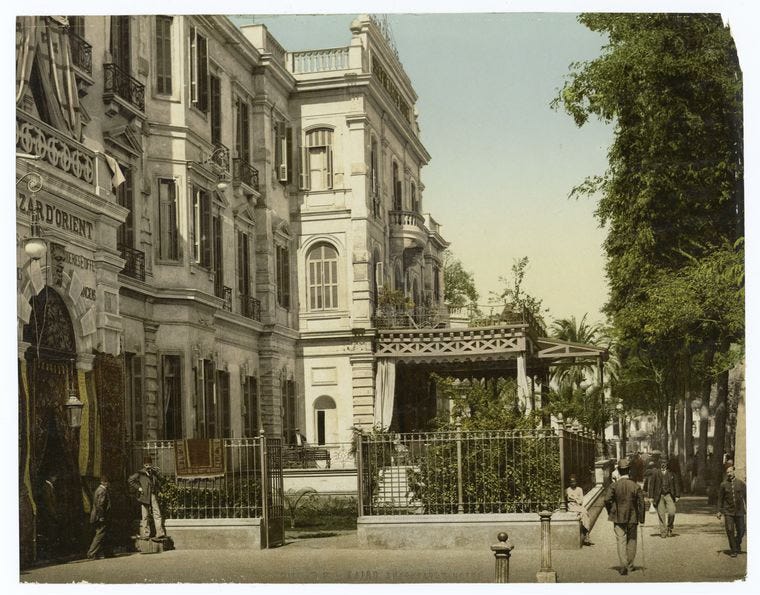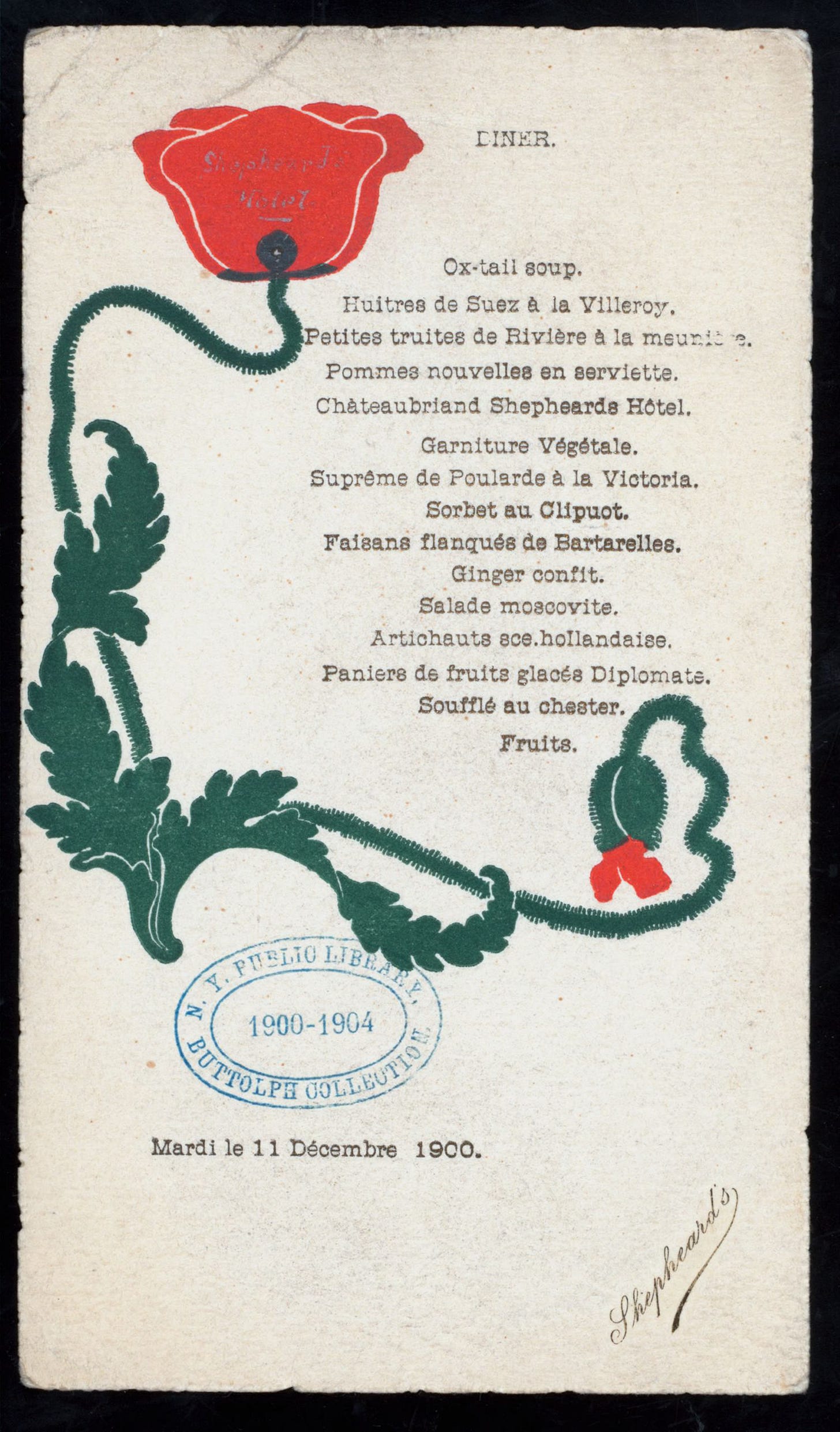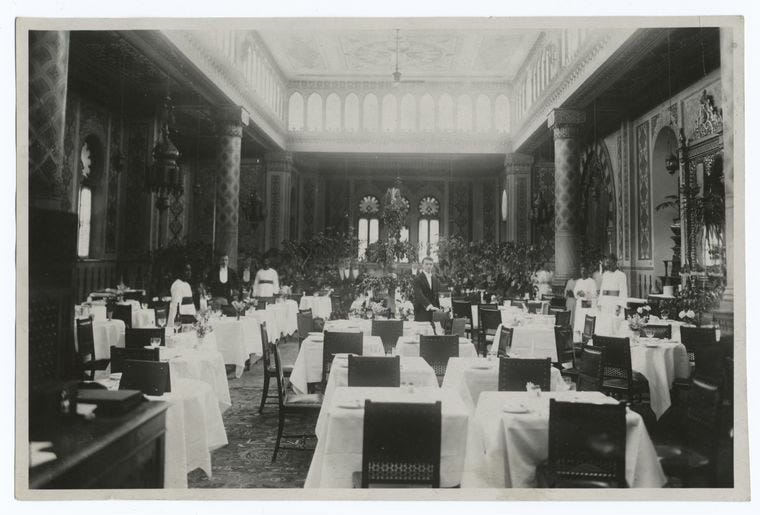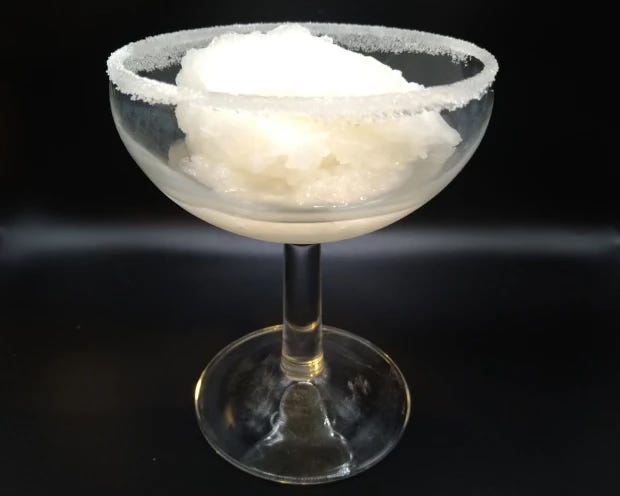Aleister and Rose in Cairo
February, 1904
Aleister’s first visit to Egypt was 1902. He had boarded the S.S. Egypt on September 30, 1902 in Bombay, arriving in Cairo on October 22nd. Like every self-respecting, upscale European traveling to Cairo, Crowley’s lodgings were in the famous Shepheard’s Hotel. Is this where he and Rose stayed during the honeymoon? Richard Kaczynski’s Perdurabo advises us that the blissfully married couple arrived in Cairo around February 8, 1904, and by March 14th they “took a flat in a corner house near the Cairo Museum, in the fashionable European Quarter.” This means they were well-established in their own home for the writing of The Book of the Law. But for that first month, wanting to show his new bride the best that Cairo had to offer, it would make perfect sense that the Shepheard’s Hotel would be their destination whilst looking for a permanent abode.
Like The Ritz in Paris, The Grand Hotel Royal in Budapest, or San Francisco’s Palace Hotel (which will be discussed at length in a later post), The Shepheard was one of the most illustrious and prestigious hotels in the world. Known for its elegant Beaux Art styling, the hotel was not only the place to stay for the well-to-do, but was an unofficial military base for British officers and their families. When it was built in 1845, the originally named Hotel des Anglais (English Hotel), attracted the famous such as Richard Burton (the explorer and author, not Elizabeth Taylor’s twice-wed husband) with its opulent interiors that included granite pillars invoking Egyptian temples, stained glass windows, Persian carpets, and lavish gardens. With nightly dances for uniformed officers and beautiful women in evening gowns and jewels, I am confident Aleister would want to show Rose off to his fellow travelers as much as he would want to show off The Shepheard to Rose.
While off by only a few years, I was able to find a sample menu from The Shepheard, circa 1901. This is a slightly truncated classic offering of a Victorian-era French meal that would start with oysters (huîtres), move into fish, roast, and fowl accompanied by vegetables, sorbets, and desserts. I indicate truncated, as a full course French classical menu can include five to a dozen courses, but has proven to have upwards of 25 courses.
Knowing that many of the descriptors are affectations by the hotel, to the best of my knowledge are these are the translations and explanations, with some assumptions on the ingredients. Also, a handful of sauces are mentioned. I will give brief descriptions now, but promise to provide recipes at a later date:
Oxtail soup — A classic starter of a rich, beef-based soup made with beef tails. It can be broth, but the meat shreds and is scented with red wine and herbs.
Huitres de Suez à la Villeroy — “Huîtres” are oysters and “de Suez” indicates these are from oyster beds that exist(ed) in the Gulf of Suez. Further investigation on my part will be needed to determine if there are still viable aquaculture in Egypt, as so many historical oyster beds have long since been decimated by disease or modern over-farming. Back to gastronomy however, “à la Villeroy” refers to a complicated sauce made with ham, mushrooms, egg yolks, mignonette, cream, and fine herbs, that is used to coat cold meats. I will have to experiment to determine if this sauce tastes better with freshly-shucked, raw oysters, or with some that have been poached. I promise; I’ll report back my findings.
Petites truites de Rivière à la Meunière — Miniature trout with the hotel’s version of a sauce Meunière; a butter-based sauce with lemon and parsley.
Pommes Nouvelles en serviette — “en serviette” means “in a napkin”
so these would be young, fresh apples served in a napkin. I am assuming they were well-trimmed, pared, and possibly raw.What the heck was I thinking? OF COURSE “pommes” is potatoes. New potatoes at that. Undoubtedly boiled and still served in an artistically-folded napkin, to keep them warm at the table. (Thanks to Frater Abu for this oversight).Châteaubriand Shepheards Hôtel — Châteaubriand is the center cut of a beef tenderloin, usually served with shallot and wine sauce.
Garniture Végétale — Some form of vegetable garnish. One can only assume…
Suprême de Poularde à la Victoria - “Poularde” is chicken, but more than that. In a chef’s kitchen, a poularde assumes it is a “pullet” or young chicken; one that has not started laying eggs. Victoria sauce is made by sautéing chopped shallots in a bit of lemon juice to which is added chopped mushrooms, a bit of meat drippings, and mounted with butter. Just before service, soy sauce, tarragon and parsley, a some chopped pickles are added. (I’m anxious to test this one!)
*Sorbet au Clipuot [sic] — I believe this to be sorbet made with Veuve Clicquot Champagne, with the “Clipuot” a misspelling.
Faisans flanqués de Bartarelles — Pheasant breasts. It is anyone’s guess what “de Bartarelles” preparation might have been.
Ginger confit — For the French, “confit” is a method of preservation. For proteins like duck, it is to cook it slowly in its own fat and then stored in a cool place. With a method like this, a meat can be prepared in the autumn and last throughout winter. As ginger has none of its own fat, the process of making a confit of ginger is more akin to making candied citrus; not too sweet and more palatable than sugar-coated ginger coins. Like the sorbet above, this would be served as a palate cleanser.
Salade muscovite — Russian salad. Unlike our modern form of meal presentation, the salad is often served near the end of the meal. It was thought to aid digestion; that the roughage would assist the previously-served meats to <ahem> move through your system more successfully. A Russian salad is quite ornate, containing potatoes, artichoke hearts, string beans, several roasted meats including beef, chicken, ham and tongue, truffles, beets, anchovies, capers, and lettuce hearts. I think I may have to write an entry on this salad alone.
Artichauts sce. hollandaise — Artichokes with hollandaise sauce. Hollandaise is one of the classic French sauces that has survived the Gilded Age and is still made and served today (usually on eggs Benedict). It is a relatively simple mixture of egg yolks, lemon juice, and melted butter, lightly seasoned of course, with a bit of salt and white pepper (one wouldn’t want the ignominy of black pepper to be-speckle a beautifully golden sauce), and perhaps a sprinkle of cayenne.
Paniers de fruits glacés Diplomats — “Paniers” is basket. Knowing the diplomats that frequented The Shepheard, this sobriquet is probably an homage to the hotel’s distinguished clientele. “Fruits glacé” are simply candied fruits; probably various form of citrus, but also stone fruits (apricots, peaches, or cherries) or pears, which are dried, placed on a grate, and repetitively covered in layers of syrup until completely encased.
Soufflé au chester — The traditional ending of an extensive French meal as this would be a cheese course. Here, the cheese is a very well known British offering made in the west county of Chestershire. Cheshire is one of Britain’s oldest known cheeses, having been mentioned in the Domesday Book of 1086. Instead of serving an offering of fresh cheese, the hotel cooked it up in an airy, light soufflé that would have been easier to digest in the warm, Egyptian climate.
The inside of The Shepheard dining room, circa 1905. This is what Rose and Aleister might have experienced during an evening meal. In celebration of the writing of The Book of the Law, I offer a simple Champagne Sorbet recipe. I recommend Veuve Clicquot yellow label. The quality of your sorbet is entirely due to the quality of your Champagne, so don’t skimp.
*Veuve Clicquot Sorbet
4 cups water
1 cup sugar
1 bottle brut Champagne (demi-sec is slightly sweet and with the added sugar, would be too sweet for this recipe)
1 tablespoon grated orange rind, from 1 orange
Bring the water and sugar to a boil and stir until the sugar is dissolved. Remove from heat and add the Champagne. This little amount of heat will help burn off just a bit of the alcohol. Stir in the orange rind and allow the mixture to cool, or refrigerate overnight. If you have an ice cream or sorbet machine, follow its instructions until sorbet is softly frozen and not too hard. Without a machine, pour the mixture into as large of a cookie sheet you can fit in your freezer (you may have to do this in batches). Place in freezer and every 15 minutes or so, run a fork through the mixture as it freezes. Once it has reached the desired consistency, serve. “Sweet wines, and wines that foam.”






Thinking on what the "faisan flanqué de bartarelles" could have been.... Could it have been a wine sauce? The only Bartarelles Google offers me is a "Domaine des Bartarelles" wine. Incidentally, it also offers me "bartaVelles" with a V and that would be a regional name for partridge but would they offer pheasant with partridge?